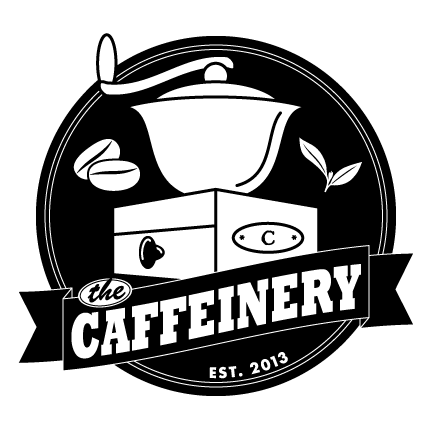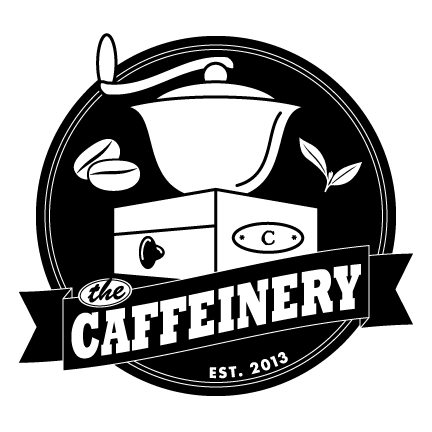
This blog is for those of us buying coffee beans and/or pre-ground coffee to brew at home. For the sake of this blog we're going to focus mostly on why the majority of coffees sold at grocery stores focus on how dark, medium, or light a roast is and why that might not be the best metric to focus on when deciding which coffee to take home.
If I were to overly simplify the coffee roasting process, it is similar to baking in the sense that it involves heat and time. The basic concept of roast level is based on the visible color of the coffee based on the duration of time a coffee is is roasted... Less time results in a lighter roast. The longer a coffee is roaster, the darker the roast.
The art, craft, and science of coffee roasting is fairly complex and requires a skilled and knowledgeable coffee roaster with experience to overcome the mountain of variables that can either make or break the taste of any given coffee. The process is particularly tricky because the majority of chemical and enzymatic changes that determine how a coffee will taste provide little-to-no visual indication as to whether or not a mark has been hit or missed. It's because of this complexity that a good many people tend to put out subpar coffee (both historically as well as currently). Taking such a complex process and boiling it down to how it looks can be extremely misleading. Alas, before we get too far into this... let's start at the beginning.
We've come a long way from where we started... The first coffee beans were roasted over an open fire using basic tools. At this point in time the roasting process was pretty primitive and yielded inconsistent results at best. Since the early days, the roasting process has progressed, regressed, and evolved via a seemingly endless process of trial and error produce the wide variety of coffee roasting techniques and technology that we enjoy today.
As I mentioned earlier, a large number of chemical changes that take place during the roasting process aren't visible. For the majority of roasting history, we've been somewhat unaware of the invisible changes. Because of this, roasters tended to cling on to the few visible changes available to them. The easiest visual change to utilize is the visual level/degree of the roast. A simple scale... light to dark. The basic idea that Lighter roasts have a more fruity and acidic flavor, while darker roasts have a more chocolatey and caramelized flavor. Seems simple enough, and with enough repetition and experience, you might even get semi consistent results. For better or worse, the coffee industry has grown comfortable with roast level being one of the primary ways to judge the quality of coffee. However, in recent years, coffee roasters have begun to move away from using roast level as the primary metric for their evaluation of roast quality. This is because the roast level does not tell the whole story about a coffee.
There are many other factors that can affect the flavor of a coffee, such as the origin of the beans (often referred to as terroir), harvest practices, processing methods, moisture level, and the type and duration of heat during the roasting process. That's a whole bunch of variables to take into consideration and we've not even discussed the things that can go wrong with brewing (the grind, water quality, and the brewing method).
So what does this mean to people who buy coffee...?
The exterior color of a coffee bean doesn't necessarily give you an accurate representation of how that particular coffee will taste. Let's say that a customer is looking for a coffee with a full body and mild acidity. Basing their purchasing decision solely on roast, they might opt for a darker roast because that would typically mean that the acids should be muted as they are delicate and tend to diminish with time and temperature. Alas, it's entirely possible to roast a coffee hot and fast in such a way that you achieve a dark complexion on the exterior of a bean but maintain an under-developed interior. This would produce a coffee that's not only acidic, but also somewhat light-to-medium in body. You could also roast a coffee in such a way that you elongate certain phases of the roast so that you focus on internal solubility with a lower finish temperature that would result in a medium roast that has substantial body that most would typically expect from a darker roast. These are just two of many examples that demonstrate the flaws in making assumptions based solely on level/degree of roast.
So, if this is such a faulty system... why is it still a thing? One word... Marketing. Primarily, grocery store marketing. It's much easier for stores to try to simplify things to sell products and meet people where they're at than try to educate and improve things. Let's dive in!
How Roast Level is Used in Grocery Stores
In grocery stores, roast level is still the primary way companies market the quality of a coffee. This is because grocery stores typically sell a wide variety of coffees from different roasters, and they need a way to help consumers make sense of the different options in the most simple way possible. What's more, most of the coffees sold in grocery stores are extremely similar, so they tend to use a lot of marketing to convince would-be customers as to how their product is different from everyone else.
Simple systems don't require specialists and experts which minimizes training and education. Light roasts are often labeled as "breakfast roasts," medium roasts are labeled as "house blends," and dark roasts are labeled as "espresso roasts." It's important to note that there is no standardized labeling system for different roasts. It's pretty much the wild west when it comes to telling people how dark a roast is. This system is meant to be easy, but it does not give consumers a lot of information about the flavor of the coffee. It's further complicated by other verbiage revolving around ambiguous terms that can't be quantified... Things like, mild, smooth, robust, strong, and the like. These are about as worthless as the "contains all natural ingredients" labels that we see posted.
How Roast Level is Used in Specialty Coffee
In the specialty coffee world, roast level is not as important as it is in the grocery store. This is because specialty coffee roasters are more focused on highlighting the unique flavor characteristics of each coffee. As a result, specialty coffee roasters will often roast coffees to different levels, depending on the origin, variety, size, and density of the beans and the desired flavor profile.
For example, a specialty coffee roaster might roast a coffee from Ethiopia to a light roast in order to highlight the fruity and acidic flavor notes of the coffee. On the other hand, the same roaster might roast a coffee from Sumatra to a medium/dark roast in order to create a coffee with a rich and chocolatey flavor.
The Future of Roast Level
As the specialty coffee industry continues to grow, it is likely that roast level will become less important as a metric for judging a coffee. This is because specialty coffee roasters are becoming more focused on highlighting the unique flavor characteristics of each coffee, regardless of the roast level. As technology continues to improve we are able to understand and manipulate more variables producing more predictable outcomes. These new tools allow for roasters to be more creative with their processes and produce amazing things.
Roast level will still be important for some coffee drinkers who prefer the nostalgia or just don't want to make their coffee quest more complicated. For example, people who prefer a bold and chocolatey flavor will likely continue to gravitate towards dark roasts. Ultimately, the best way to choose a coffee is to try different roasts and see what you like best.
Conclusion
The roast level of coffee is a historically important factor that has deeply permeated the way coffee is marketed to the public. However, it is not the only factor that matters. The origin of the beans, the processing method, and the brewing method can all have an impact on the flavor of the coffee.
As the specialty coffee industry continues to grow, it is likely that roast level will become less important as a metric for judging a coffee. However, roast level will still be important for some coffee drinkers. At the end of the day, who gives a shit. The goal is to help people find and consume coffee that brings them joy. Sometimes the journey is just that... a journey and it's not meant to be simple. The whole point of this article is to shed a little light on potential marketing bullshit that tends to get in the way of your journey and might prevent you from finding a new favorite in the same way bad directions make it harder to reach your intended destination.
If you're new to coffee, we encourage you to experiment with different roast levels. You might be surprised to find out you enjoy something a little different. And who knows, you might just find a new favorite!
That said, if you'd like to taste the differences in different roast options that provide good examples of light, medium, and dark roasts... We also have you covered!


Share:
Get the Best Coffee Possible: Buy It Direct From a Roaster
2023 Spirit of Small Business Award